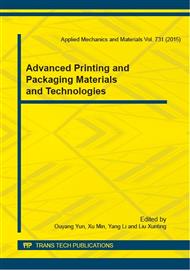p.159
p.163
p.169
p.173
p.179
p.183
p.187
p.193
p.197
A Blind Watermarking Algorithm Using DWT and DCT Techniques for Color Image
Abstract:
In this paper, a robust watermarking technique which combines features of Discrete Wavelet Transformation (DWT) and Discrete Cosine Transformation (DCT) is proposed. Firstly the original color image is converted from RGB space to Lab space. In this technique, DWT is used to decompose the luminance coefficients into various frequency and time scale. The block DCT is applied on DWT coefficients of middle frequency to provide high level of robustness. The encrypted watermark is embedded in it by comparison of the intermediate frequency coefficients. Then the color image is converted from Lab space to RGB space to get the watermarked image. Extracting the watermark does not need the original image and the original watermark, it is a blind watermarking method. Finally, the watermarked image is attacked. Peak signal-to-noise ratio (PSNR) value and the normalized correlation (NC) coefficient value are used to evaluate this technique. Simulation experiments show that the watermark is perceptually invisible, this method can achieve the highest possible robustness without losing the transparency.
Info:
Periodical:
Pages:
179-182
Citation:
Online since:
January 2015
Authors:
Price:
Сopyright:
© 2015 Trans Tech Publications Ltd. All Rights Reserved
Share:
Citation:


